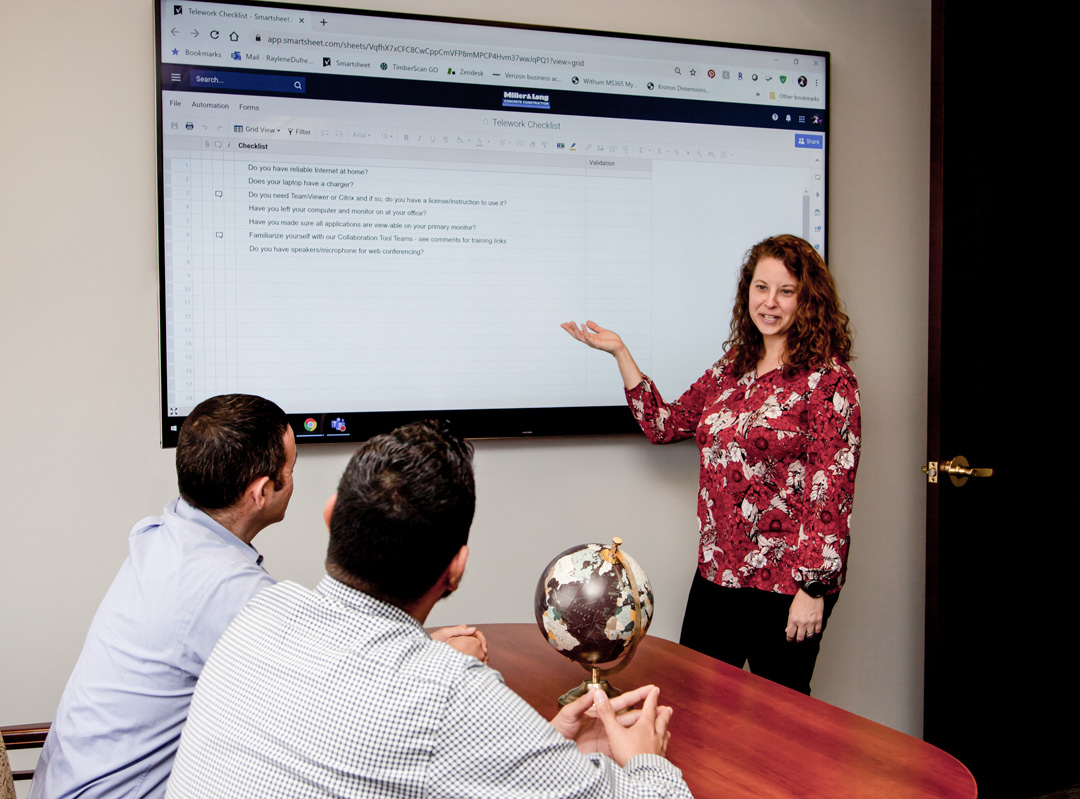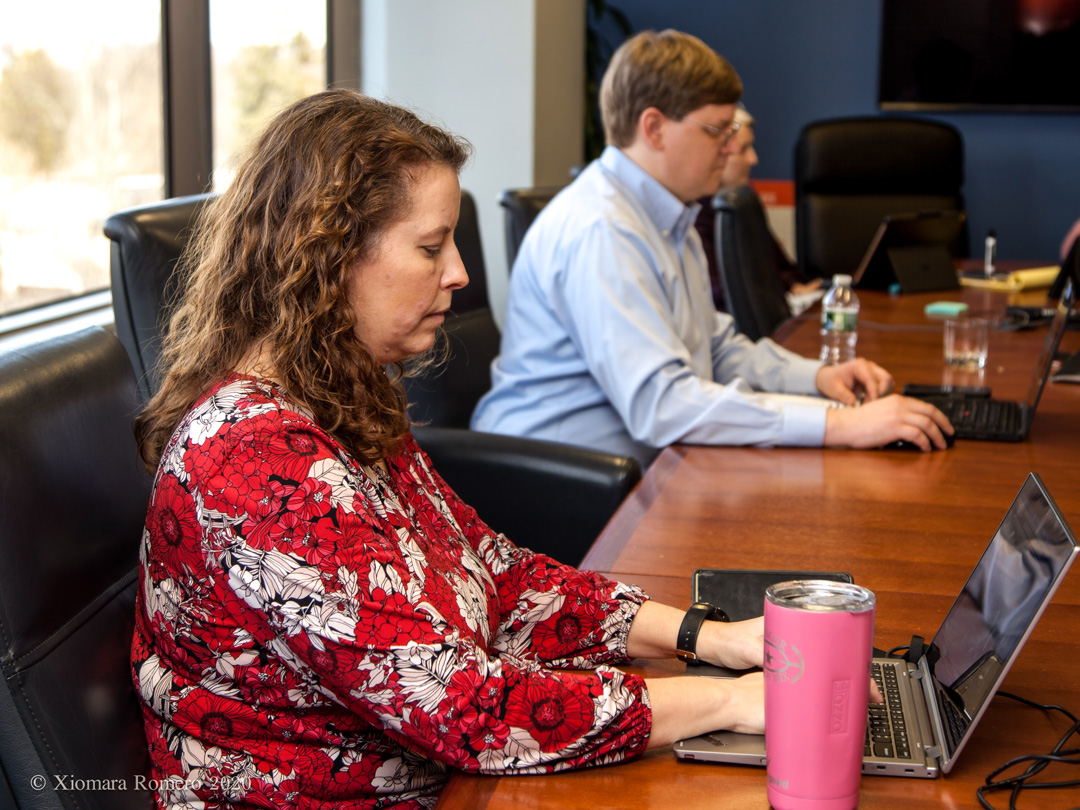Editor’s Note: Here at Smartsheet, our customers inspire us every day. This guest article comes from Raylene Dufresne, who works as the director of IT at Miller & Long.
When I was in college during the mid- to late-90s, every student was required to take a writing composition class. Mine was being led by a new faculty member who wanted to use computers in class specifically for multi-object orienting and chat rooms to engage students in deeper discussions around our reading assignments.
There was one problem: Our class size was so large that there wasn’t enough room for everyone in a single computer lab.
Since I was a fast learner when it came to technology, the professor asked me to help teach the students in a second computer lab. And while I didn’t know it at the time, this opportunity helped me take the first step on a path to becoming a lifelong IT professional, and eventually the director of IT at Miller & Long, a full-service provider of concrete construction services in the mid-Atlantic region.
For this article, my goal is to share a little more about my career, challenges I’ve witnessed in the IT field, how IT functions in the construction industry, how Miller & Long uses Smartsheet, and our IT department’s response to the COVID-19 situation.
Empowerment starts with technology education
After helping facilitate that class, I branched out to educate faculty at the university on technical aspects, from creating websites to computer skills. After I graduated, I moved to teaching courses at ITT Technical Institute in how to build computers. Soon thereafter, I started a role at Carnegie Mellon University in their Software Engineering Institute where I taught adults how to use cutting-edge software in the workplace.
My IT career grew from helping others master technology, from building and programming machines to becoming savvy in using software. Because of these experiences, I’ve always looked at IT departments as a means to both maintain and improve technology at organizations, and create positive experiences for end users. Basically, we help end users to help ourselves.
Related content
7 soft skills IT teams need for digital transformation
Top challenges for IT professionals
Many of the issues I’ve faced throughout my career boil down to two important factors: consistent communication and transparency. Not everyone fully understands the role these play in shaping best-in-class IT service.
Customers often want someone to explain the what and why of hardware or software to them in a way that makes sense, without an abundance of technical jargon. This has been consistent through all of the different IT roles that I’ve held, especially when it comes to training and transparency. Aspiring IT leaders who prioritize these have a better chance of moving up the ladder and can gain a deeper understanding of customer needs.
If you’re looking to advance in an IT department, there are some great leadership certification programs available that you can complete in one week. When the time is right, you can also ask your leadership if your company has any interim manager positions open, or even opportunities to serve as a project lead to gain more experience. You want to advocate for yourself while being a team player.
IT managers do a lot of technical work and should constantly advocate for and listen to customers. We’re there to make sure that technical and software programs work as intended, are used the right way, and are secure. More and more managers are coming from customer-facing roles. It’s more important now than ever to identify with the needs of the customer and business from a budgetary perspective to move forward.
How IT functions in construction
The main difference between managing an IT team in construction versus academia is resources. In the education space, monetary resources are often null and void. You have very specific budgets with little wiggle room, so you can’t spend on technologies that aren’t already identified as needs. This reduces a team’s ability to pivot with the complex needs of end users.
The same is true for staffing resources; requests from outside of the IT department can be overwhelming on a normal day. Since all other departments are strapped for funding, many individuals and teams turn to free resources that can be harder to track from an IT perspective. At a construction company, you can get a budget if you make a compelling case — whether it’s for infrastructure or other essential technologies.
There’s a little bit of IT in every single department. We must understand budgetary restrictions when we support their future plans. Some of the current IT initiatives that we aim to complete in 2020 are implementing a new phone system across all locations, installing fiber optic cables at job sites to improve our internet, upgrading wireless networks so we can handle more connections, and moving on-premises databases to a cloud-based solution.
Related Content
2020 and beyond: The future of work is human
We’re also setting up budgets for all departments to promote transparency. This will allow us to track the cost of what each department has asked of the IT team over the last fiscal year so we can build more accurate technology budgets.
In construction, innovation also comes in the form of complementary robotics that help reduce risk to our construction workers’ safety. If we can use a small robotic device, controlled by someone on site, to go where it’s not as safe to fix concrete issues that were found after testing, we’re reducing risk to our employees and contractors.
There are even remote-controlled devices that we can maneuver onto a piece of rebar in order to take its temperature. It’s a cool way to keep workers safe and help them develop new technical skills.
Using Smartsheet to improve transparency and communication
IT infrastructure and other technologies can sometimes be behind the times at construction companies. For example, some of our databases are 10 years old and look like the 3.1 Windows operating system. While working to switch these systems with cloud-based solutions, we’re using Smartsheet, one of our favorite SaaS platforms, to track everything.
For the first time ever, we’re providing online security compliance training to the entire organization, and tracking everyone’s progress through Smartsheet. This helps us ensure transparency with department leaders, giving them the opportunity to remind their teams to get it done.
We’re using Smartsheet to track the cost of installing internet access at a job site, depending on its size. This allows us to track the all-up IT budget as well. So, if we’re bidding on building a new structure down the street, we can make sure that the IT needs for the job are reflected in that bid.
We’re also tracking issues through sheets. For example, as we roll out our new phone system we’re collecting all issues via a Smartsheet form, which on-site workers can easily submit from their smartphones. The phone system vendor also receives form submissions, which helps reduce their response time, which has been great to see. There are also forms for equipment losses at job sites, which gets routed to the right person through automation within Smartsheet.
Related Content
How to lead IT during the COVID-19 crisis
Our response to COVID-19
At the start of the coronavirus outbreak, our company was proactive, clearing the payroll and insurance departments to work remotely. Working from home is not as easy for construction companies, but I discussed how we can give everyone the ability to succeed nonetheless.
Using Smartsheet, I created a telework checklist in order to help our staff prepare for a prolonged remote work period. This way, my teams can mark off tasks as they’re completed to ensure total transparency and open communication.
We then could check in with employees that switched to remote work to make sure they have everything they needed, including updating their laptops and sharing access to the right resources. As the director of IT, I’m also checking in with my staff to make sure they aren’t too overwhelmed with new tasks, as supporting remote workers leads to fielding more requests that would normally be solved at the IT help desk.
During this strange time, construction continues to be an essential business. So it’s extremely important for my team to support our ongoing initiatives and our employees, whether they’re working from home or on a site. Our best tactics for staying in sync and continuing our dynamic work is to communicate effectively and encourage transparency for all of our IT processes and projects.
I don’t know if how we manage construction sites in the future will change, but I’m confident that IT will continue to play a critical role in educating, supporting, and working alongside our end users in a post-coronavirus society.
To read more about how Miller & Long uses Smartsheet to improve project visibility and collaboration, and premium add-ons DataMesh and Data Shuttle to quickly gather important data, check out their customer story.



